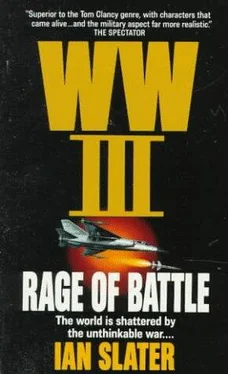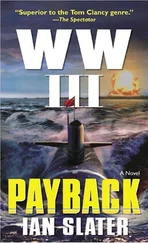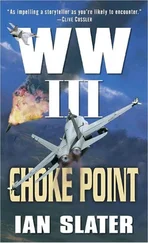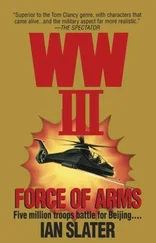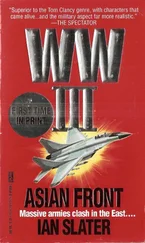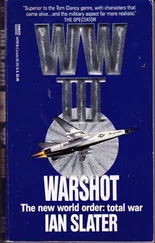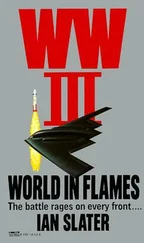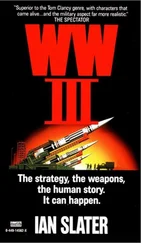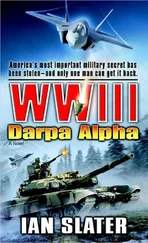Ian Slater - Rage of Battle
Здесь есть возможность читать онлайн «Ian Slater - Rage of Battle» весь текст электронной книги совершенно бесплатно (целиком полную версию без сокращений). В некоторых случаях можно слушать аудио, скачать через торрент в формате fb2 и присутствует краткое содержание. Год выпуска: 1991, ISBN: 1991, Издательство: Ballantine Books, Жанр: Триллер, на английском языке. Описание произведения, (предисловие) а так же отзывы посетителей доступны на портале библиотеки ЛибКат.
- Название:Rage of Battle
- Автор:
- Издательство:Ballantine Books
- Жанр:
- Год:1991
- ISBN:0-345-46514-8
- Рейтинг книги:3 / 5. Голосов: 1
-
Избранное:Добавить в избранное
- Отзывы:
-
Ваша оценка:
- 60
- 1
- 2
- 3
- 4
- 5
Rage of Battle: краткое содержание, описание и аннотация
Предлагаем к чтению аннотацию, описание, краткое содержание или предисловие (зависит от того, что написал сам автор книги «Rage of Battle»). Если вы не нашли необходимую информацию о книге — напишите в комментариях, мы постараемся отыскать её.
Rage of Battle — читать онлайн бесплатно полную книгу (весь текст) целиком
Ниже представлен текст книги, разбитый по страницам. Система сохранения места последней прочитанной страницы, позволяет с удобством читать онлайн бесплатно книгу «Rage of Battle», без необходимости каждый раз заново искать на чём Вы остановились. Поставьте закладку, и сможете в любой момент перейти на страницу, на которой закончили чтение.
Интервал:
Закладка:
Accordingly, in Whitehall, the minister of war, bearing what Washington called the “big picture” in mind, advised the headquarters of all United Kingdom air forces, in Wycombe, and Royal Navy Commander, Western Approaches, that if a pilot was confronted with the choice of running low on fuel in pressing an attack, thereby risking the loss of his aircraft, he was to exercise “discretion.” What this meant to Fernshaw and others like him in the “Highways Department,” as the STOL — short takeoff and landing — Jaguar arm was referred to, was that if Whitehall, the Admiralty, or the Royal Air Force didn’t like the decision you made, you would be up another creek — and smartly at that. At the same time, the Admiralty was arguing, “wherever possible,” attacks to protect the SSBN/SNs must be pressed home “ at all costs.” And Fernshaw knew their reasoning was sound, for if Germany was lost, France would fall, and with it the vitally needed ports for NATO, making resupply from America impossible. Then the SSBN/SNs and the relatively few Stealth bombers would be left as a mobile deterrent. On the other hand, a single Jaguar, its superb fly-by-wire avionics making it one of NATO’s best ground-hugging, close-support fighters, could knock out ten times its number in tanks.
Normally Fernshaw, his plane entering thick stratus, wouldn’t have found the decision a difficult one to make, but like so many of the other outnumbered Allied pilots called upon day after day, night after rain-sodden night, to rise from carrier England and stem the “surge” tactics of the Russian air forces, Fernshaw was exhausted. Fatigued from having lost twelve pounds in a week due to the wrenching G forces, he wasn’t sure that the decision whether or not to engage the Badger and its outriders was a case of weighing military priorities or a plain old-fashioned matter of funk versus guts. He headed for cloud.
Both the Russian leader, front right of the Badger, and the second Sukhoi to the Badger’s left rear and higher, covering his leader’s konus ranimosti— ”cone of vulnerability”— spotted the Jaguar climbing fast, forty-three miles ahead. The Russians’ confidence with the two-to-one advantage was further boosted by the fact that their Sukhoi Flagon-Fs’ speed — up to 2.5 Mach should they go as high as thirty-six thousand feet — was much faster than the Jaguar’s 1.6 Mach. The sun was also behind them, and no matter how sophisticated the electronics of the Anglo-French plane’s fire control and weapon-aiming computer were, the sun in your visor was still a distinct disadvantage. In the millisecond world of fighters so fast they could outstrip some of their missiles, direct sunlight, Polaroid visors notwithstanding, could produce oslepitel ‘nost’— “glare-out”—on the dials.
The Jaguar was climbing hard and fast into high-piled cumulus, the Russian leader glimpsing the Jaguar’s round-chisel-shaped nose, telling him he was up against a state-of-the-art British-Ferranti weapon-aiming system. But he had no clue as to whether the British pilot was going for “high ground” in cloud cover to attack or to escape. The Russian pilot, knowing that radio silence had been broken earlier by the cruiser’s transmission to Soviet Northern Fleet headquarters, switched on, instructing his wingman, “Stay with Mother. I’ll sbiyu— ’knock off’—our friend in Heaven.”
With the wingman acknowledging, the leader’s Flagon, now approaching the same height as the Jaguar 40.1 miles away, hit the Turmansky afterburner. In straight vertical climb, the wings’ flash in sunlight gave the fighter beauty as well as the aspect of pure power as it rocketed five thousand feet in less than ninety seconds, giving the Russian a ceiling of eleven thousand should the Jaguar be contemplating an attack after all. If the NATO fighter was carrying a second Exocet on one of its hard points, then the Badger and the two Sukhois would now be within range. Everyone, except pilots, the Russian pilot knew, thought electronic warfare had made modern aerial combat little more than a superfast computer game. The fact, however, was that there were so many variables, from sunlight and weight of ordnance to a bird looking like a fighter for a fraction of a second, that machines couldn’t do it all.
Now the Jaguar, forty-six miles away, invisible in cloud but a clear blip on the Flagon’s “Skip Spin” intercept long-range radar screen, was heading nor’nor’east — toward southwestern England. But this could well be a feint.
Leveling out, the Russian pilot saw a faint orange ball in the cloud. He banked fast left, until he realized the orange ball and the others like it were decoy flares the Jaguar was jettisoning as protection from heat seekers. The Russian pushed the select button for one of his two air-to-air Amos “actives,” flicked the cover, and fired, watching the missile streaking, at over a thousand meters a second, toward the Jaguar over thirty miles away, its radar-seeking head programmed to ignore infrared signatures, going instead for the enemy’s own radar pulse. Then the Russian pilot saw his own warning radar screen go to fuzz, the Jaguar obviously dropping chaff to jam the Amos’s radar guidance. The Russian fired both of his heat-seeking AA-3s.
Fernshaw saw his warning lights flashing frantically and heard the “Bogey” tone. His Jaguar perilously low on fuel, the Sukhoi engaging him with a three-hundred-miles-per-hour speed advantage, Fernshaw knew that unless he dropped his extra fuel pod to gain more speed, he would not escape. He released the external pod and shut off all radar, heading higher into cloud, noting his fuel consumption rapidly increasing in the thinner air, and the three Russian missiles closing.
Seeing the Jaguar’s drop tank tumbling, reflecting like foil in the sun, the Russian leader shut off his active radar in case the British pilot had tried to be clever, going high to fire off a radar seeker of his own. The Russian banked sharply to his left, ordering his wingman to stay with the Badger and both of them to go as low as possible to evade the western approaches’ long-range over-the-horizon radar. He then went to radio silence, leaving only his channel scanner turned on. Within a second his radio surged — the panic-stricken voice of the Badger’s observer — and in a flash he knew what had happened. The Jaguar had outfoxed him, shutting off its radar, doubling back in the cloud rather than running, while he, the Russian, had been looking for the Jaguar up ahead.
Immediately the Russian went into a tight turn and dove, his nose starting to bleed profusely in the G force, the Badger already under attack, the Jaguar passing on its forward right side four miles away and firing its remaining Exocet at the big, droning maritime reconnaissance plane.
With the extra speed afforded by the release of the fifteen-hundred-pound Exocet, the British fighter, its twenty-eight-foot six-inch wingspan six feet shorter than the Sukhoi’s, was in its classic tight turn, coming in fast behind the second Sukhoi, whose pilot was now breaking right and, in an effort to beat the Jaguar at its own game, fired a cluster of six 120-pound Aphid passive heat seekers, which would ignore all radar signals, homing in only on exhaust. At eight hundred miles per hour, the Aphids were twice as fast as the oncoming Exocet, but their best mode of attack, because they were heat seekers, was rear entry. They needed to do a U-turn, but it was too tight.
They missed the Exocet, but two of them had now locked on to the exhaust of the Jaguar itself as the British fighter, completing a turn in a sound barrel of rolling thunder, passed behind the Badger, the tracer from the Badger’s top turret ceasing for a split second as the Jaguar flashed past the airplane’s three-story-high tail. The 23-millimeter cannon in the Badger’s radar-guided rear turret, however, was still firing even as the Exocet slammed into the plane’s starboard exhaust flange, the explosion blowing the plane in two, the tail assembly tumbling more slowly than the forward section, whose engines, or rather, the red-hot mass that had been the twin Mikulin turbojets, plummeted like a rock, the entire section upside down, cockpit intact as it slammed into the sea, disintegrating in spumes of steam and spray. Yet before it had gone down, the half-second burst from its radar control rear turret had strafed the Jaguar, the fighter’s cockpit now whistling, the splintered Perspex and metal fragments from the demolished HUD screen disintegrating in the hail of the Badger’s 23-millimeter cannon. The Jaguar was shuddering violently, yawing to the left. Fernshaw thought he must be hit but wasn’t, his double-ply flying suit and visor protecting him from the peppering of the instrument panel’s debris. But he couldn’t see for several seconds. At first he thought it must be his visor scratched to a fog, but then he could smell electrical fire, realizing that the fog was smoke. He fought for control, but too many of the fly-by-wire microcircuits were blown. He felt the plane’s nose drop suddenly, glanced at the altimeter but couldn’t see it through the smoke, guessing it had been shot out anyway. Elbows tucked in, he took hold of the yellow and black zebra-striped hand grips. The bolt release fired. Icy air was roaring about his helmet. He prayed he was at least five hundred feet above the ocean. Smoke gone, he could now see he was at least a thousand feet above a sharply inclined slab of white-veined blue that was the sea. He could spot only one of the Sukhois — a silver dot miles to the east. Then he thought he saw the second one, but it was only the hapless Hormone chopper several miles away hovering helplessly above the wreckage of the Yumashev, rescue harness extended, picking up survivors as Fernshaw struggled to crawl into the orange one-man tent raft.
Читать дальшеИнтервал:
Закладка:
Похожие книги на «Rage of Battle»
Представляем Вашему вниманию похожие книги на «Rage of Battle» списком для выбора. Мы отобрали схожую по названию и смыслу литературу в надежде предоставить читателям больше вариантов отыскать новые, интересные, ещё непрочитанные произведения.
Обсуждение, отзывы о книге «Rage of Battle» и просто собственные мнения читателей. Оставьте ваши комментарии, напишите, что Вы думаете о произведении, его смысле или главных героях. Укажите что конкретно понравилось, а что нет, и почему Вы так считаете.
